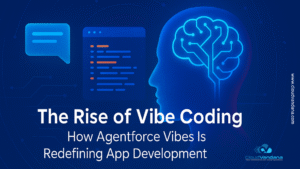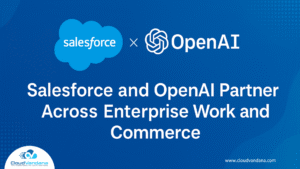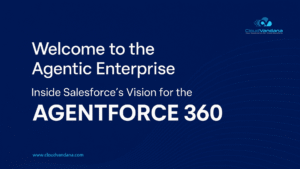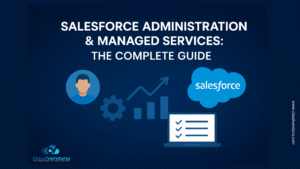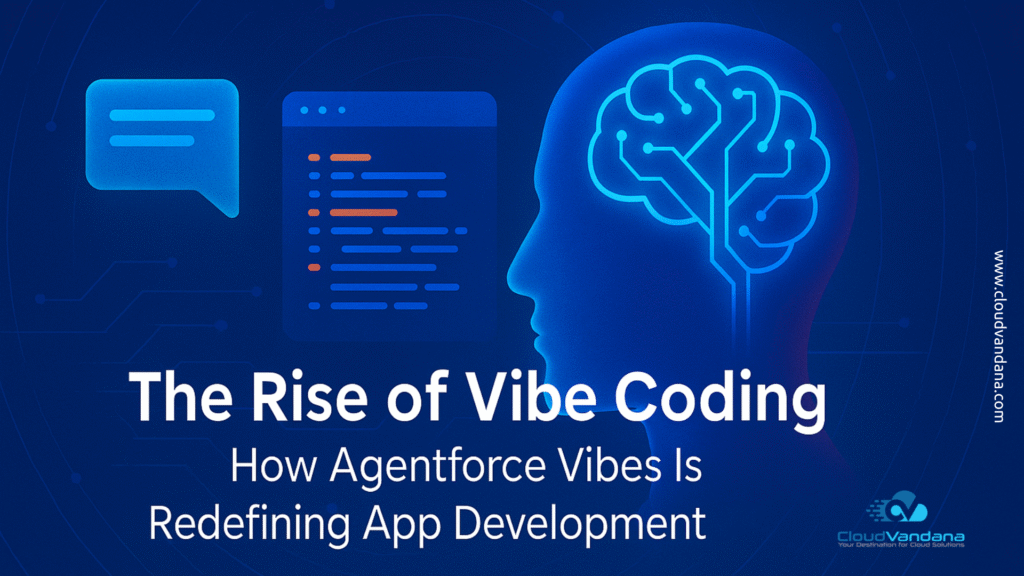Introduction: A New Chapter for the Connected Enterprise
Salesforce never stands still. Every seasonal release brings new ways to simplify processes, empower users, and help organizations operate more intelligently. The Winter ’26 Release is no exception — it’s a major step toward smarter automation, deeper AI adoption, and tighter security.
With this update, Salesforce is reinforcing its promise of the AI + Data + CRM era — empowering users to not just work faster, but think smarter. From Flow automation improvements to Agentforce capabilities, and from developer productivity tools to security enhancements, Winter ’26 is full of upgrades that make the platform more powerful, flexible, and intuitive.
Whether you’re an admin, developer, architect, or business leader, this release matters to you. Let’s unpack the highlights, explore the biggest changes, and see how to prepare your org for a smooth upgrade.
1. Key Dates and Release Timeline
Before exploring the features, it’s important to note the rollout schedule.
- Sandbox Preview – Begins mid-August 2025. Ideal for testing updates in advance.
- Production Upgrades – Roll out across weekends of September 19, October 3, and October 10, 2025 (depending on your instance).
- Release Notes – Available early August through Salesforce Help.
💡 Pro Tip: Refresh your sandbox before the preview window so it matches your production org’s configuration. This ensures smoother testing of flows, automations, and integrations.
2. The Big Themes of Winter ’26
Every Salesforce release has a heartbeat — a few key themes that define its direction. Winter ’26 revolves around three:
- Automation Intelligence – Smarter, faster, AI-driven Flow capabilities.
- Enhanced Productivity – Admin tools that simplify everyday work.
- Secure, Scalable Platform – Stronger permission controls and developer-friendly architecture.
3. Flow Automation: The Star of the Release
Flow continues to dominate the conversation. Salesforce is steadily making Flow the only automation tool across the platform — and Winter ’26 supercharges it.
3.1. AI-Powered Decision Elements
Flows can now use AI to interpret unstructured data such as emails, chat logs, or form responses.
Imagine a service case flow that reads a customer’s message, detects sentiment, and automatically routes it to the right team — no manual tagging needed.
Why it matters:
This brings intelligence into everyday automation, eliminating rule complexity and making workflows far more adaptive.
Image Idea:
A visual diagram showing “AI Decision Element inside Flow Builder” with arrows depicting text → sentiment detection → routing logic.
Alt: Salesforce Flow Builder with AI Decision Element analyzing text and routing cases automatically.
3.2. Debugging for Screen Flows
A small but mighty improvement — modern debug mode now works for Screen Flows. You can test user inputs, track each element’s output, and visualize how data moves through the flow without leaving the builder.
Why it matters:
Debugging screen flows used to be trial and error. Now, it’s visual, fast, and developer-grade.
3.3. Flow Version Comparison
Ever lost track of what changed between versions? The new Version Compare tool displays side-by-side differences — nodes added, elements modified, variables removed.
Why it matters:
It helps admins audit changes, maintain documentation, and comply with change-management best practices.
3.4. Use New Records Instantly
When a flow creates a record, that record’s fields become immediately available downstream — no more “Get Records” element required.
Why it matters:
This removes an entire step from many flows, making automation faster and cleaner.
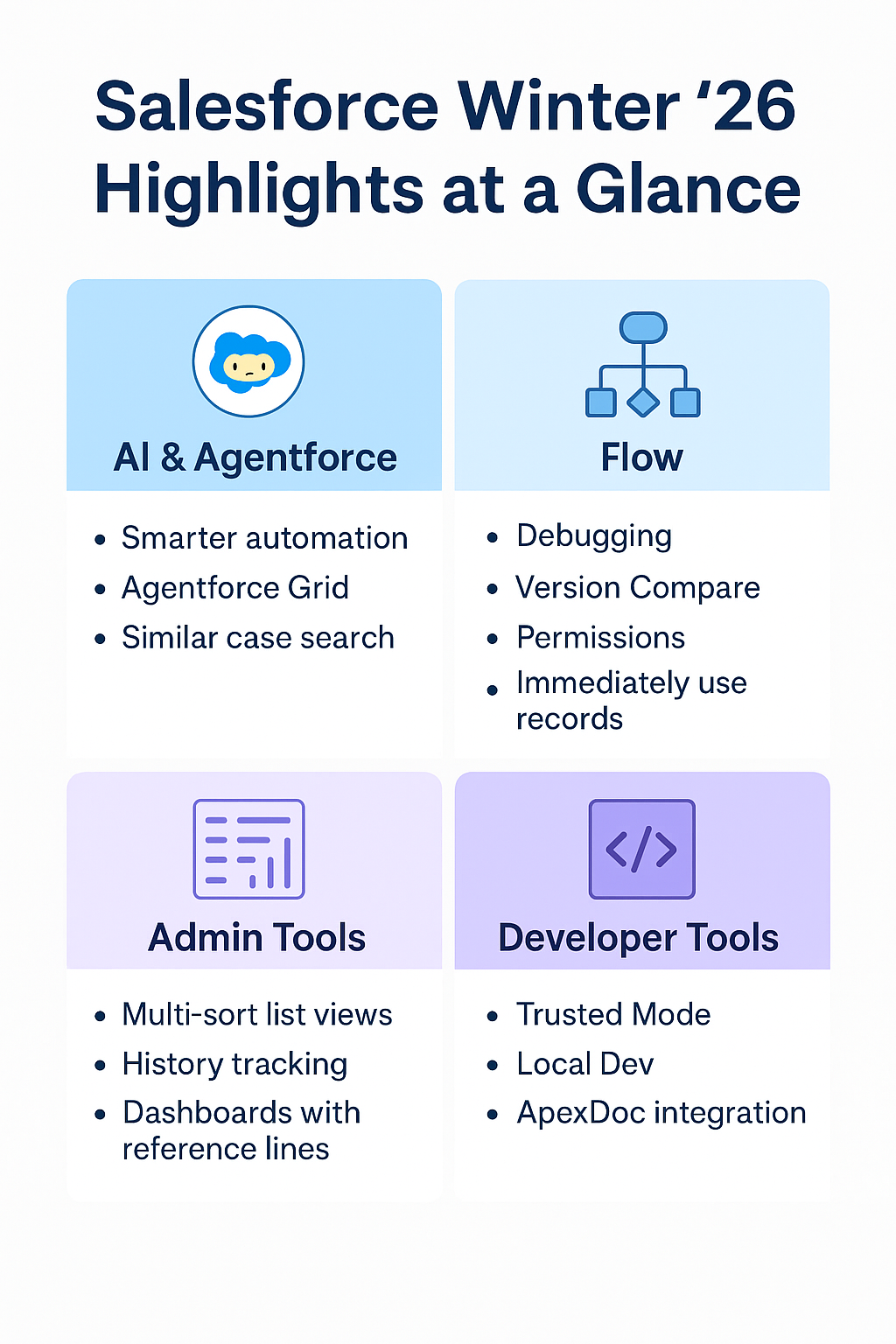
3.5. Flow Run Permissions
Security takes center stage. From Winter ’26 onward, users need explicit permissions to run flows.
Profiles and permission sets must now include “Run Flows” access; otherwise, users may see errors after the upgrade.
Why it matters:
It tightens security by ensuring only intended users trigger sensitive automations.
3.6. Apex Class Permission Enforcement
Flows that invoke Apex now check if users have access to the underlying class.
This bridges a long-standing gap between declarative and programmatic access control.
Why it matters:
Protects against unintended data exposure and enforces consistent governance across automations.
3.7. Automation App & Action Hub
Salesforce introduces an Automation App — a central hub where you can view and manage all automation assets.
Inside it sits the new Action Hub, showing all invocable actions and their dependencies.
Why it matters:
Admins gain visibility into what actions exist, where they’re used, and how they interconnect — perfect for troubleshooting or auditing automation sprawl.
4. Admin Experience: Small Changes, Big Impact
Salesforce admins often feel invisible heroes — maintaining orgs behind the scenes. Winter ’26 gives them several quality-of-life upgrades.
4.1. Type-Ahead Field Picker
When configuring list views, admins can now search for fields instantly instead of scrolling through endless dropdowns.
It’s a micro-improvement that saves hours over time.
4.2. Multi-Column Sorting in List Views
You can now sort by up to five columns simultaneously — perfect for large data sets where multiple dimensions matter (e.g., sorting by Region → Industry → Stage).
Why it matters:
Gives users Excel-like control inside Salesforce without exporting data.
4.3. Field History Tracking Improvements
Admins can now view tracking limits, total tracked fields, and which objects are nearing thresholds.
Also new: the User object now supports up to 20 trackable fields (Beta).
Why it matters:
Simplifies compliance, auditing, and user-level change tracking — especially in regulated industries.
4.4. Dashboards with Reference Lines
Dashboard charts now support reference lines — benchmarks or goal lines that make performance visual and contextual.
Example:
Add a reference line at 80% to instantly show if your team is meeting its SLA or quota.
4.5. Safer CSV Exports
When exporting reports, Salesforce now automatically prefixes risky characters (=, +, -) with an apostrophe to prevent formula injection attacks in Excel.
Why it matters:
It’s a small change that significantly boosts data safety for external sharing.
4.6. Smarter Permission Set License Management
Salesforce can now auto-unassign permission set licenses that are no longer valid.
This prevents “license drift” and keeps your org compliant.
4.7. Password Reset by Email
Users who forget their usernames can now reset passwords using just their registered email — a simple but much-needed usability improvement.
5. Developer Enhancements: More Power, Less Friction
Winter ’26 isn’t just for admins. Developers get a suite of productivity upgrades and modernization tools.
5.1. Trusted Mode for Lightning Web Components
Developers can now designate trusted third-party libraries in Lightning Web Security.
This feature loosens the strict isolation that previously blocked some popular JavaScript frameworks — without compromising safety.
5.2. ApexDoc Integration
Salesforce formalizes ApexDoc, allowing developers to generate rich, readable documentation directly from code comments.
Why it matters:
Promotes consistent documentation and helps teams onboard faster.
5.3. Local Development for Single Components
LWC Local Development now supports single-component mode with wire adapters and Apex integration.
You can test one component in isolation — ideal for faster iterations.
5.4. Simplified Package Dependencies
A new parameter (calculateTransitiveDependencies) automatically resolves dependent packages — making modular development easier for ISVs and enterprise architects.
5.5. Live Test Monitoring
Salesforce introduces a pilot feature for real-time test monitoring, letting you watch test runs, view logs, and stop execution on demand.
This mirrors modern CI/CD tools and improves debugging.
5.6. Lightning Out 2.0
Lightning Out (embedding Lightning components in external web apps) now works in Lightning Experience environments — bridging custom portals, intranets, or external systems seamlessly.
6. AI & Agentforce: Salesforce’s Intelligent Future
AI is no longer a separate add-on in Salesforce — it’s the foundation of the platform. Winter ’26 cements that vision.
6.1. Meet Agentforce Grid
Agentforce Grid is like a spreadsheet for AI automation — letting teams combine CRM data, AI prompts, and automation logic visually.
Use Case Example:
A sales manager can set up an Agentforce Grid that pulls top opportunities, generates personalized follow-up emails using AI, and assigns tasks automatically.
6.2. Smarter Sales and Service Agents
Salesforce expands Agentforce into Sales and Service Cloud. Agents can now execute tasks (like creating cases or logging calls) instead of just recommending actions.
6.3. Service Assistant with Similar Case Search
Service Cloud’s AI can now surface similar resolved cases using semantic search — so agents find relevant answers faster.
6.4. Pricing and Licensing Update
Access to Service Assistant now requires the new Service Planner User License — so admins must review assignments before upgrade.
6.5. Revenue Cloud Innovations
Two important enhancements:
- CPI-Linked Pricing: Products can auto-adjust prices based on Consumer Price Index.
- Opportunity Line Item Forecast Splits: Forecasts can roll up dynamically based on product-level revenue splits.
Together, these strengthen pricing agility and forecasting accuracy.
7. Security & Governance Upgrades
A secure CRM is a reliable CRM — and Winter ’26 continues Salesforce’s investment in trust.
- Enhanced Flow Permissions prevent unauthorized execution.
- Apex Access Controls align with org-wide permission policies.
- Safe Report Exports block spreadsheet exploits.
- Audit Expansion allows tracking of more user fields and permission changes.
Salesforce is clearly preparing enterprises for an era of stricter compliance and zero-trust data environments.
8. User Experience Enhancements
Winter ’26 also includes a series of subtle UX updates: cleaner page layouts, faster load times in Lightning Experience, and accessibility tweaks for screen readers.
These may not make headlines, but they ensure Salesforce remains usable and inclusive for all users.
9. Key Takeaways for Teams
Admins
- Review and update Flow Run permissions.
- Test automations that invoke Apex classes.
- Assign new Service Planner licenses if applicable.
- Use sandbox preview to validate flows and dashboards.
Developers
- Explore Trusted Mode and Local Development.
- Use ApexDoc for documentation consistency.
- Update package dependency handling.
Business Users
- Expect smarter automation and faster dashboards.
- Enjoy improved case management via AI assistants.
- Leverage new list view and dashboard features for clarity.
10. What You Should Do Next (Roadmap)
Here’s a suggested adoption roadmap to handle Winter ’26 smoothly:
| Timeframe | Actions |
|---|---|
| Before sandbox refresh / preview | Review release notes & determine which features impact your org. Sign up for pre-release org. |
| During sandbox / preview | Test critical flows (especially those invoking Apex). Check user permissions. Enable new features (in non-production) proactively. |
| Mid preview / buffer | Adjust your permission sets / profiles for flow run access. Update customizations (code, integrations) that may break. |
| Pre-production | Run regression tests, especially for flows and automation. Use the new debug tools and version compare features. |
| Post-upgrade | Monitor logs, errors, user feedback. Roll out training material for users/admins. Turn on additional optional features. |
11. Visual Idea Suggestion
Infographic Title: “Salesforce Winter ’26 Highlights at a Glance”
Format: Vertical infographic for blog and social media.
Sections:
- AI & Agentforce → Smarter automation
- Flow → Debugging, Version Compare, Permissions
- Admin Tools → Multi-sort, History Tracking, Dashboards
- Developer Tools → Trusted Mode, Local Dev, ApexDoc
Alt Text: “Infographic summarizing Salesforce Winter ’26 highlights across Flow, AI, Admin, and Developer categories.”
12. Conclusion: The Era of Intelligent Automation
The Winter ’26 release isn’t just another upgrade — it’s a clear signal of where Salesforce is heading:
toward an intelligent, secure, and fully automated CRM ecosystem.
AI is becoming native, automation is becoming contextual, and administration is becoming effortless.
For businesses, this means fewer clicks, faster insights, and smarter workflows.
But innovation requires preparation. Organizations that test early, adapt permissions, and embrace new tools will experience the most seamless transition.
13. CloudVandana’s Take
At CloudVandana, we help Salesforce teams make sense of these releases — turning updates into advantages.
Our Salesforce consulting and AppExchange solutions (like CV Files, CV Rich Text Area, and Quote Clone) are already optimized for the latest Winter ’26 standards, ensuring your org runs smoother, faster, and more securely.
If you’d like to prepare your Salesforce environment for Winter ’26 or need expert help implementing the latest automation and AI capabilities, we’re here to help.
👉 Get in touch with CloudVandana and make your Salesforce smarter for the future.

Atul Gupta is CloudVandana’s founder and an 8X Salesforce Certified Professional who works with globally situated businesses to create Custom Salesforce Solutions.
Atul Gupta, a dynamic leader, directs CloudVandana’s Implementation Team, Analytics, and IT functions, ensuring seamless operations and innovative solutions.




